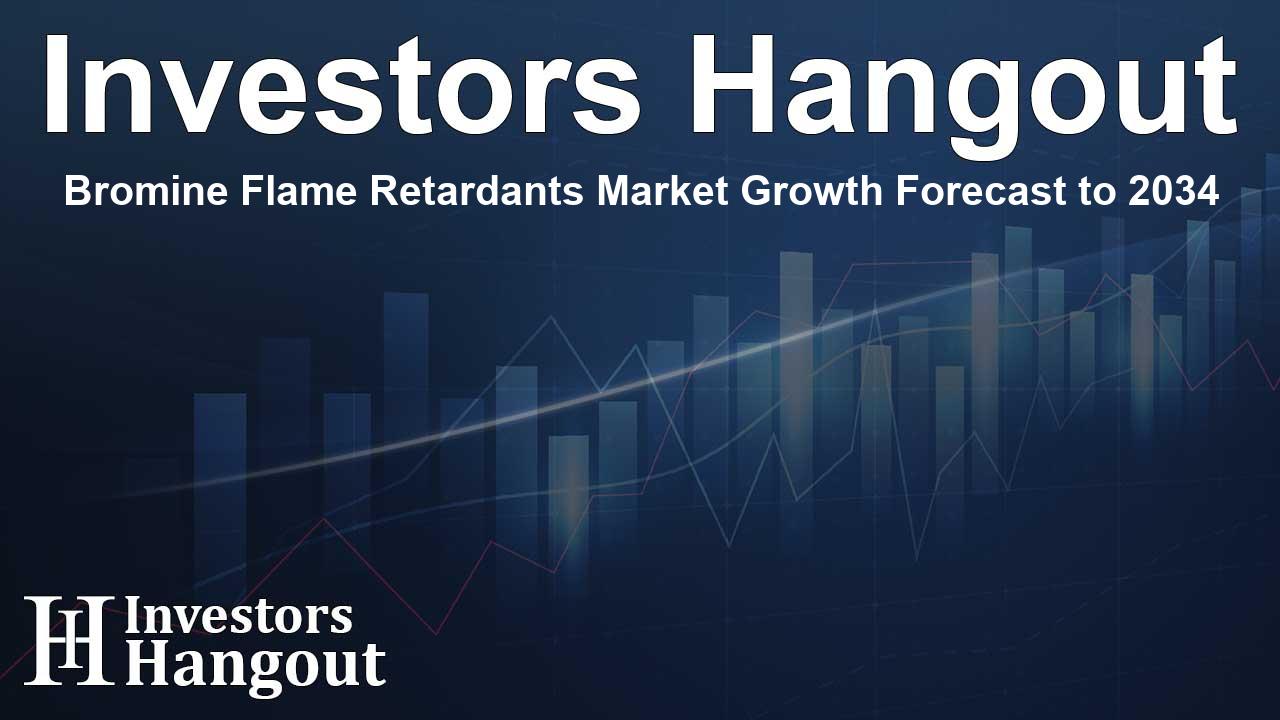Bromine Flame Retardants Market Growth Forecast to 2034

Bromine Flame Retardants Market Growth Forecast to 2034
The bromine flame retardant (BFR) market is poised for significant expansion over the coming decade. Forecast projections indicate an impressive increase from USD 2,399.5 million in 2024 to approximately USD 4,264.0 million by 2034, reflecting a strong compound annual growth rate (CAGR) of 5.9%. This growth trajectory is supported by the rising integration of flame retardants in critical applications across various industries, including electronics, automotive, and construction.
Market Dynamics Influencing Growth
Bromine flame retardants are vital for enhancing fire safety, particularly in electronics and electrical equipment, where safety standards are evolving rapidly. The burgeoning trend of miniaturization in electronic devices further drives the requirement for BFRs, particularly with the rising production of electric vehicles (EVs), which necessitate flame retardant materials in essential components.
Geographical Insights
North America and the Asia-Pacific region are expected to play critical roles in dominating the BFR market. Notably, the Asia-Pacific sector is predicted to experience the fastest rate of growth, predominantly driven by a booming electronics manufacturing hub and enhancing investments within the automotive industry. This development aligns with the broader global economic trends focusing on innovation and technology.
Environmental Considerations
Despite the numerous advantages that BFRs confer, there is growing scrutiny regarding the potential health risks associated with brominated compounds. These concerns, coupled with the increasing development and availability of alternative flame retardants, could present challenges to the continued expansion of the BFR market. Nonetheless, the high efficiency offered by BFRs ensures their ongoing relevance across various sectors.
Drivers and Opportunities in the Market
The primary factors propelling the BFR market forward include an escalating demand for fire safety measures in both the electronics and automotive sectors. Moreover, an upswing in awareness associated with preventative measures against fire hazards is adding further momentum to growth. The production of electric vehicles is another catalyst for increased demand for bromine flame retardants, specifically in battery components needing effective fire-resistance.
Emerging Solutions
There exist considerable opportunities for developing eco-friendly alternatives to traditional BFRs. Continuous innovation in recycling technologies and sustainable production processes is expected to alleviate environmental concerns surrounding brominated products, thereby unlocking fresh pathways for growth.
Market Segmentation by Product Type
The BFR market consists of several segments, leading with products such as tetrabromobisphenol-A (TBBPA), hexabromocyclododecane (HBCD), and decabromodiphenyl ether (Deca-BDE). Among these, TBBPA holds a dominant market share due to its wide-ranging applications in electronics, particularly circuit boards and enclosures. HBCD finds its primary use in building insulation materials, while Deca-BDE is significantly involved in the automotive and textile industries.
Key Industry Players
Prominent vendors in the global BFR market include Albemarle Corporation, Lanxess AG, and Israel Chemicals Ltd. (ICL), all of which possess substantial market influence due to their extensive product portfolios, well-established distribution networks, and significant investments in research and development.
Key Market Drivers and Trends
The growth trajectory of the bromine flame retardant market is influenced by several prominent factors. These include an increasing demand for fire-resistant materials across electronics and automotive applications and evolving safety regulations in the building and construction sectors that mandate the use of flame retardants.
Furthermore, the expansion of electric vehicle production worldwide substantially contributes to the demand for flame retardant materials, particularly in battery components and related machinery. Advancements in sustainable flame retardant technologies are also expected to cultivate new growth opportunities while addressing environmental and health concerns.
Frequently Asked Questions
What is the projected growth rate of the BFR market?
The bromine flame retardant market is projected to grow at a CAGR of 5.9% from 2024 to 2034.
Which regions are expected to dominate the BFR market?
North America and Asia-Pacific are set to dominate the bromine flame retardant market, with the latter expected to see the fastest growth.
What are the main applications of bromine flame retardants?
BFRs are primarily used in electronics, automotive industries, building materials, and textile manufacturing.
Who are the leading companies in the BFR market?
Leading companies include Albemarle Corporation, Lanxess AG, and Israel Chemicals Ltd. (ICL).
What drives demand for bromine flame retardants?
Increased safety regulations, the rise of electric vehicles, and growing awareness of fire safety measures drive demand for BFRs.
About Investors Hangout
Investors Hangout is a leading online stock forum for financial discussion and learning, offering a wide range of free tools and resources. It draws in traders of all levels, who exchange market knowledge, investigate trading tactics, and keep an eye on industry developments in real time. Featuring financial articles, stock message boards, quotes, charts, company profiles, and live news updates. Through cooperative learning and a wealth of informational resources, it helps users from novices creating their first portfolios to experts honing their techniques. Join Investors Hangout today: https://investorshangout.com/
Disclaimer: The content of this article is solely for general informational purposes only; it does not represent legal, financial, or investment advice. Investors Hangout does not offer financial advice; the author is not a licensed financial advisor. Consult a qualified advisor before making any financial or investment decisions based on this article. The author's interpretation of publicly available data shapes the opinions presented here; as a result, they should not be taken as advice to purchase, sell, or hold any securities mentioned or any other investments. The author does not guarantee the accuracy, completeness, or timeliness of any material, providing it "as is." Information and market conditions may change; past performance is not indicative of future outcomes. If any of the material offered here is inaccurate, please contact us for corrections.